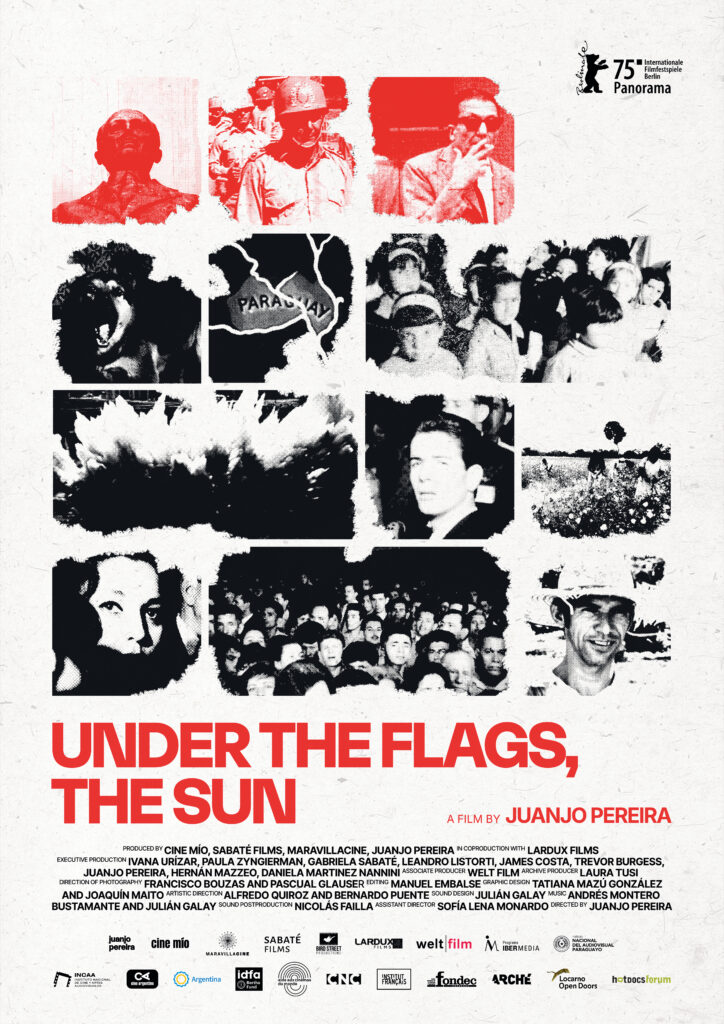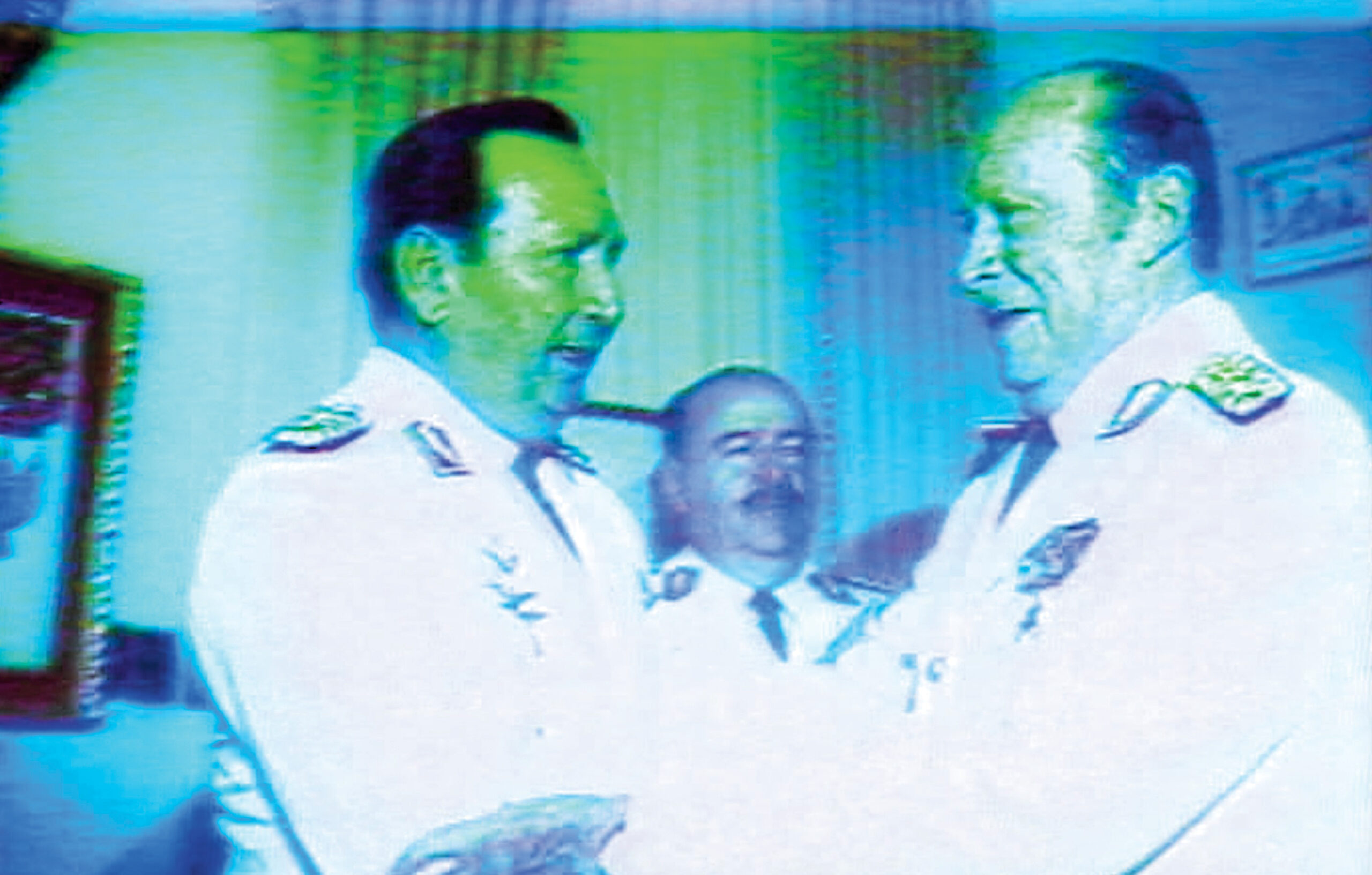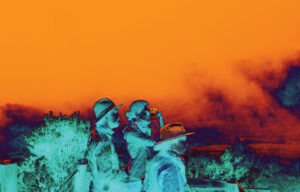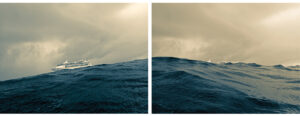This article is adapted from AQ’s special report on COP30
An age-old Latin American joke has it that Paraguay does not exist. When your country is landlocked and counts two regional giants—Argentina and Brazil—as neighbors, a reputation for being an afterthought can seem inevitable. This gibe about Paraguay’s irrelevance is blown sky-high in filmmaker Juanjo Pereira’s Under the Flags, the Sun, a riveting documentary about Alfredo Stroessner’s 35-year dictatorship from 1954 to 1989, the longest in South American history.
The son of a Bavarian accountant, Stroessner ruled Paraguay with a general’s disciplined and ruthless might. Putsches bookended his regime; one put him in power, and another toppled him in his old age—though not his political party. The Partido Colorado that accompanied Stroessner in his decades-long campaign of “peace, work and well-being” survived and continues to dominate the country’s politics today.
Pereira’s film brings the years of the so-called Stronato to life through rare archival footage. Official propaganda clips, local newsreels, foreign reportages, declassified documents, and even amateur films—sometimes in color, but mostly in black and white—populate the screen in rotation. Notably, Pereira refrains from using the typical convention of voice-over narration. There are no overt editorials. Instead, by experimenting with montage, the film flips its material upside down. A military parade meant to celebrate Stroessner takes on a sinister tone when it is suddenly rewound, revealing soldiers marching backward in an uncanny manner.
To piece together his first feature, Pereira culled 120 hours of footage from more than a dozen archives from Paraguay, Argentina, Brazil, the U.S., Germany, France and Belgium. It seems clear that his main selection criterion privileged the testimony, however muffled, of regular Paraguayans. This becomes all the more notable when one realizes just how overpowering Stroessner’s cult of personality was. As a result, landmark moments of the dictatorship, once flaunted or shrugged off, depending on the particular political agenda, take on a new, more honest legacy.

Under the Flags, the Sun (Bajo las banderas, el sol)
Directed by Juanjo Pereira
Screenplay by Juanjo Pereira
Distributed by Icarus Films
Paraguay, Argentina, U.S., France, Germany
For instance, the film follows the construction of the Itaipú Dam on the Paraná River, located on the border between Paraguay and Brazil. The massive hydroelectric power plant, begun in the 1970s and completed in 1984, was the largest of its kind in the world at the time. A broadcaster repeats the official spiel that all necessary resources were “mobilized so that the environmental impacts can be reduced to a minimum,” and another brags about the humane working conditions of the manual laborers. These statements are then juxtaposed with images and TV broadcasts of dozens of killed workmen, evacuated villages, and stranded animals in the aftermath of enormous dynamite explosions, which Pereira edits into slow motion. A painful and cruel dimension thus suffuses Stroessner’s “pharaonic project,” as another critic aptly called the dam.
Another example involves the notorious Nazi physician Josef Mengele, better known as the Angel of Death for his significant role in murdering prisoners at Auschwitz. For years, it was an open secret that Stroessner sheltered Mengele in Paraguay and prevented his extradition to West Germany. Under the Flags, the Sun clarifies how strongly Paraguayans objected to this blatant evasion of justice, through clips of protests demanding Mengele’s arrest and interviews with Stroessner in which he dodged questions about the SS officer.
Much of what is presented in the film connects Paraguay’s history to broader forces beyond its borders. The Itaipú Dam, shared with Brazil, generated more electricity than any other facility in the world for over a quarter century, only recently surpassed by China’s Three Gorges Dam. The presence of Nazis like Mengele further tied the country to the power struggles of the Cold War. Under the Flags, the Sun links the nation’s past to larger geopolitical dynamics and dispels unfounded assumptions about Paraguay’s invisibility. In addition to providing a nuanced portrayal of Stroessner’s regime, Pereira’s documentary builds a strong case for Paraguay’s significance on the world stage.









